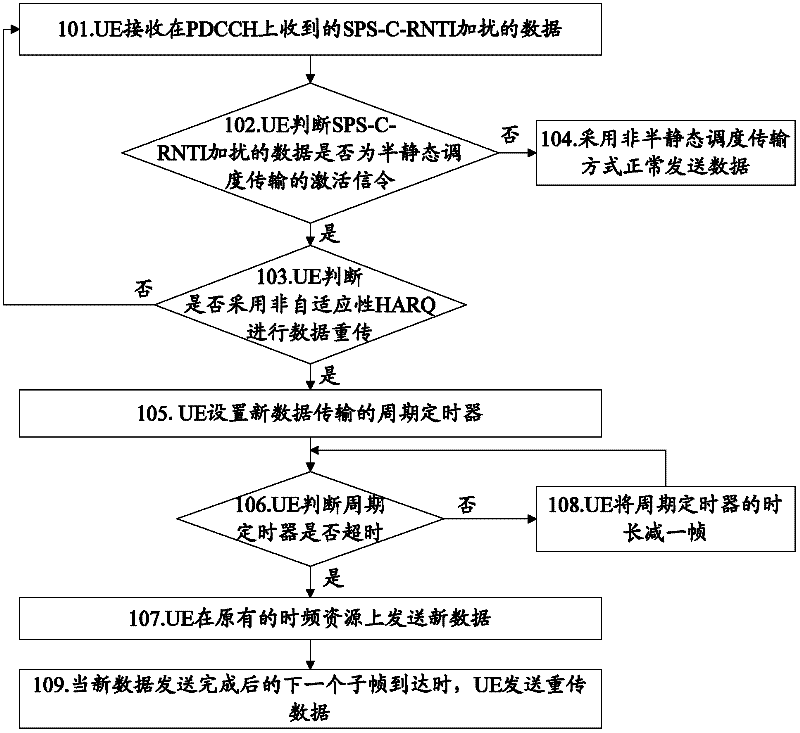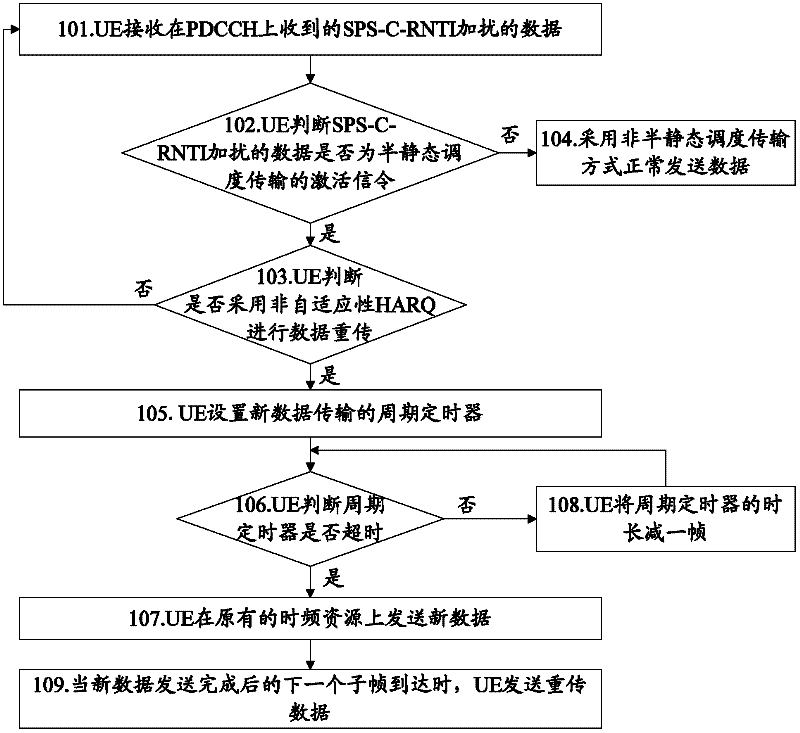Method for data transmission in semi-persistent scheduling mode and user equipment
A semi-static scheduling, user equipment technology, applied in digital transmission systems, transmission systems, error prevention/detection using return channels, etc., can solve the problems of collision between new data and retransmitted data, reduce system overhead, etc., to reduce computing power , the effect of reducing system overhead and improving processing performance
- Summary
- Abstract
- Description
- Claims
- Application Information
AI Technical Summary
Problems solved by technology
Method used
Image
Examples
Embodiment Construction
[0037] The basic idea of the present invention is: when the SPS-C-RNTI scrambled data received by the UE is the activation signaling of the semi-persistent scheduling transmission, and non-adaptive HARQ is used for data retransmission, the UE sets the new data transmission A periodic timer: after the periodic timer expires, the UE sends new data on the original time-frequency resource, and sends retransmission data when the next subframe arrives after the new data is sent.
[0038] The present invention will be further described in detail below with reference to the accompanying drawings and specific embodiments.
[0039] The present invention provides a data transmission method in a semi-static scheduling mode, figure 1 It is a schematic flow diagram of the method of data transmission in the semi-static scheduling mode of the present invention, as shown in figure 1 As shown, the method includes the following steps:
[0040] Step 101, the UE receives the SPS-C-RNTI scrambl...
PUM
 Login to View More
Login to View More Abstract
Description
Claims
Application Information
 Login to View More
Login to View More - R&D
- Intellectual Property
- Life Sciences
- Materials
- Tech Scout
- Unparalleled Data Quality
- Higher Quality Content
- 60% Fewer Hallucinations
Browse by: Latest US Patents, China's latest patents, Technical Efficacy Thesaurus, Application Domain, Technology Topic, Popular Technical Reports.
© 2025 PatSnap. All rights reserved.Legal|Privacy policy|Modern Slavery Act Transparency Statement|Sitemap|About US| Contact US: help@patsnap.com



